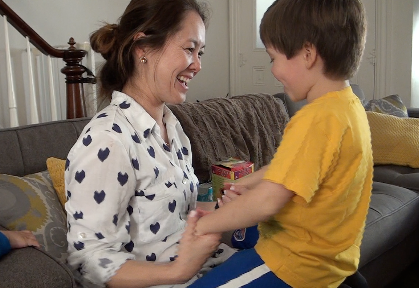
Around 18 weeks of gestation, your baby is starting to be able to hear in utero. The complex structure of tubes that make up the inner ear are formed at this point and although the fetus does not yet have actual ears, the bones and tubes of the inner ear are connected by brain cells called neurons to the parts of the brain that interpret sound waves. Babies are able to interpret sounds of lower frequencies. One of the very first sounds that the unborn baby hears is the repetitive thump of mom’s heartbeat. Rhythm! Early math! One study found that fetuses will move rhythmically to a drum beat.
Use this sense of rhythm to teach some basic early math skills. Rhythm is a part of a song or a part of a whole, just like fractions, decimals, and percentages. This early concept of all of the beats and notes of music coming together to make a song, provides this early foundation. Babies have innate rhythm. You have probably heard the spoon repetitively hitting the high chair tray, or the tiny foot repetitively kicking the back of the car seat….rhythm!
You can use rhythm to teach cause and effect, (do an action and it makes a noise) or turn taking, or creating a foundation for patterns.
Simply by clapping your hands along to music, or saying nursery rhymes to a distinct rhythm, you are stimulating parts of your toddler’s brain that interpret patterns and numbers.
References:
Palmer, J. (1987). Sensing in the womb. The American Biology Teacher. Retrieved from https://www.jstor.org/stable/4448576?seq=1#page_scan_tab_contents

